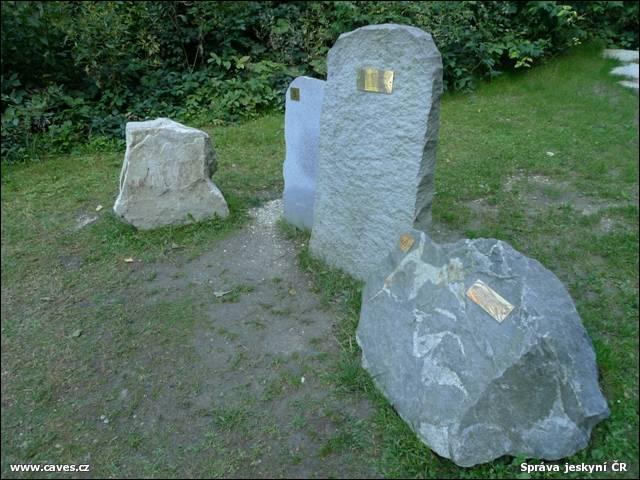Na Pomezí Caves - Protection and research

CONSERVATION, RESEARCH AND USE OF THE CAVES
The Na Pomezí Caves are protected according to Act No. 114/1992 Coll., on Nature Conservation and Landscape Protection as a National Nature Monument “Jeskyně Na Pomezí” established by resolution of the Council of SmKNV Ostrava Ref. No. 635/24 from 25 May 1965, with an area of 11.74 ha in the cadastral areas of Dolní Lipová and Vápenná. Since 1990 the Na Pomezí Caves, together with other open caves in the Czech Republic, are in the direct administration and care of the state nature conservation bodies, since 2006 of the Cave Administration of the Czech Republic, a state allowance organization of the Ministry of the Environment. Care of the area of the national nature monument and protective and operational regimens are governed by long-term management plans based on legal protection conditions.
Not only the form of development and technical equipment of the caves (minimum extent of treatment to make the cave accessible, non-corrosive materials, extent of lighting limited both thermally and in terms of time, electronic protection of valuable stalactite and stalagmite formations), but also the whole operational regimen limiting both the number and frequency of visitors in groups on the route open to the public is adapted to the needs of conservation of the caves and their preservation for the next generations.
There is a special protective regimen in the winter season for the cave areas where colonies of bats and horseshoe bats hibernate. There is regular occurrence of 9 species from the total number of several hundreds of individuals. According to the data from 2001, the Lesser Horseshoe Bat (Rhinolophus hipposideros), Greater Mouse-eared Bat (Myotis myotis), Bechstein's Bat (Myotis bechsteinii), Natterer's Bat (Myotis nattereri), Geoffroy's Bat (Myotis emarginatus), Whiskered Bat (Myotis mystacinus), Brandt's Bat (Myotis brandtii), Daubenton's Bat (Myotis daubentonii) and the Brown Big-eared Bat (Plecotus auritus) occur in the Na Pomezí Caves. In 1997, a record-breaking 459 individuals were found here. There is also a more important wintering place for bats called Liščí díra (Fox Hole), where more than 950 overwintering bats were found.
The unique cave system is a subject of interest of experts from various branches. Karstological research is performed here, including absolute dating of cave fills, in order to discover the genesis and development of the Jeseník region. Both the state and transformations of the cave microclimate and hydrological conditions are systematically monitored to thoroughly ensure protection conditions. Continuation research with the aim of discovering further continuations of the cave system continues in areas that were not made accessible. Biospeleological research, traditionally focused on monitoring and regular counting of chiropterans, has in recent years been enriched with underground research of invertebrates. A system of precise fissure meters has been installed in the caves by the Institute of Rock Structure of the Academy of Sciences of the Czech Republic. Twice a month the data are read here for the long-term monitoring of present movements of mountain massifs along faults and tectonic fissures.
The everyday task of the cave administration is the presentation of the above-mentioned data for the general public. The Na Pomezí Caves are annually visited by almost 60,000 tourists, many of them from Poland.